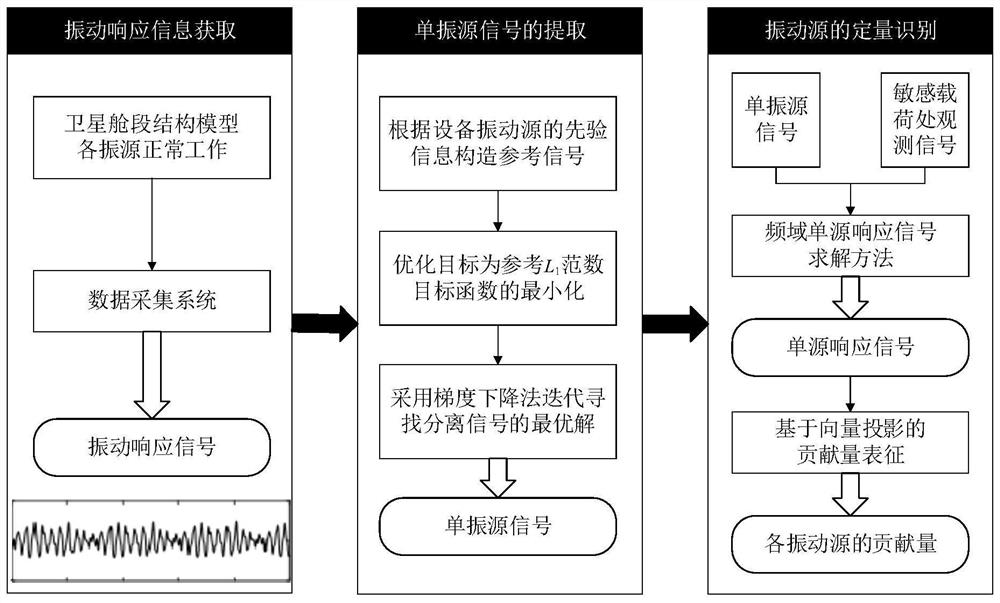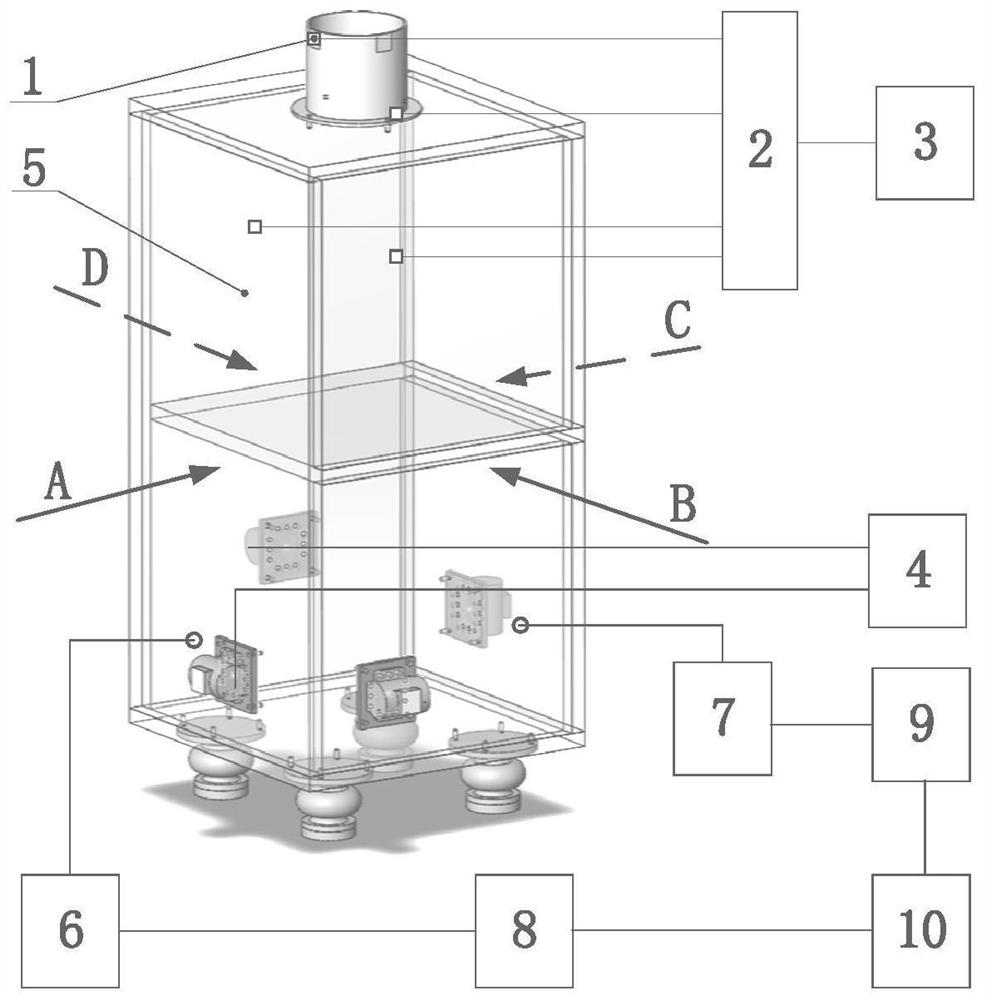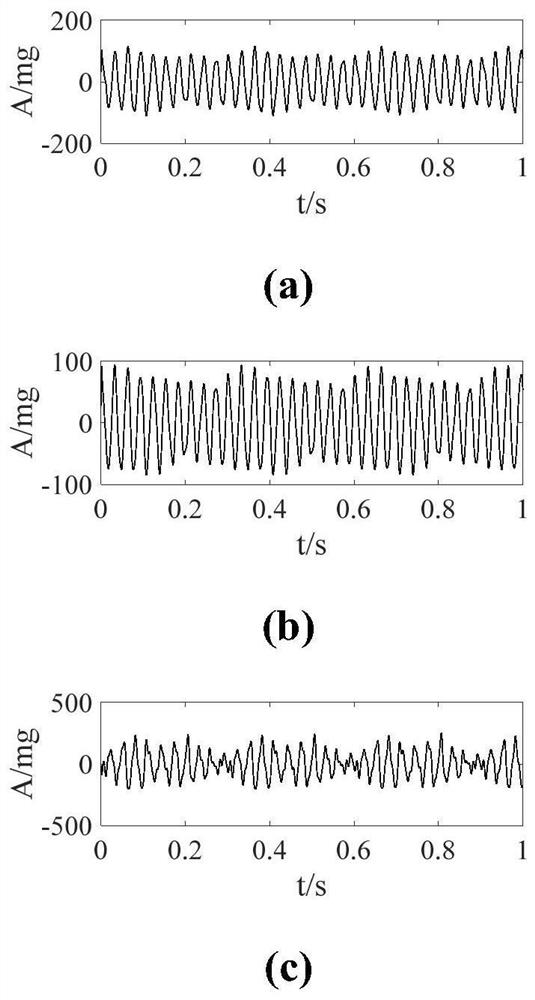A Quantitative Identification Method of Satellite Microvibration Sources Based on Sparse Blind Source Separation
A technology of blind source separation and quantitative identification, which is applied to pattern recognition in signals, character and pattern recognition, measurement devices, etc. Effective calculation, improved precision, and high accuracy
- Summary
- Abstract
- Description
- Claims
- Application Information
AI Technical Summary
Problems solved by technology
Method used
Image
Examples
Embodiment Construction
[0063] The present invention is described in detail below in conjunction with accompanying drawing and specific embodiment:
[0064] refer to figure 1 Shown is the flow chart of quantitative identification of satellite micro-vibration sources. The vibration sources of the satellite cabin structure model are working normally, and the vibration signals of sensitive loads and different positions on the model surface are collected to ensure that the number of observation signals is greater than the number of source signals; 1 Norm Construction Reference Sparse Blind Deconvolution Algorithm Reference L 1 The norm objective function constructs the reference signal according to the prior information of the vibration source, and uses the gradient descent method to iteratively optimize the reference L 1 Norm objective function, find the optimal solution of the separation signal y corresponding to the minimum objective function, and realize the extraction of single vibration source sig...
PUM
 Login to View More
Login to View More Abstract
Description
Claims
Application Information
 Login to View More
Login to View More - R&D
- Intellectual Property
- Life Sciences
- Materials
- Tech Scout
- Unparalleled Data Quality
- Higher Quality Content
- 60% Fewer Hallucinations
Browse by: Latest US Patents, China's latest patents, Technical Efficacy Thesaurus, Application Domain, Technology Topic, Popular Technical Reports.
© 2025 PatSnap. All rights reserved.Legal|Privacy policy|Modern Slavery Act Transparency Statement|Sitemap|About US| Contact US: help@patsnap.com



